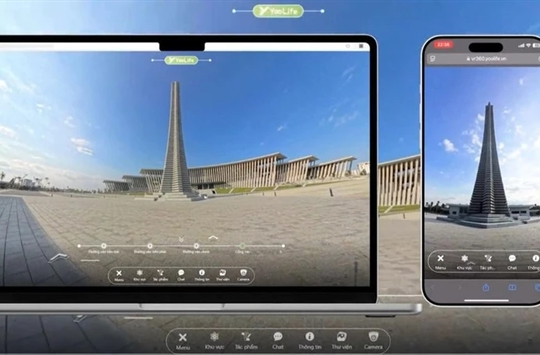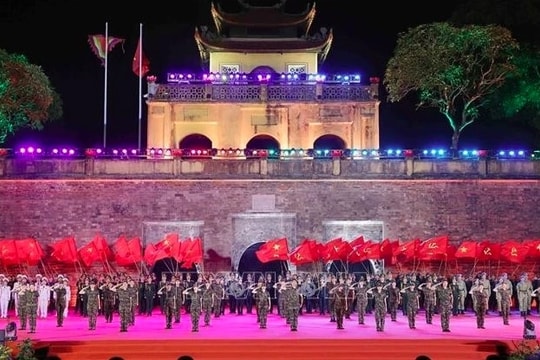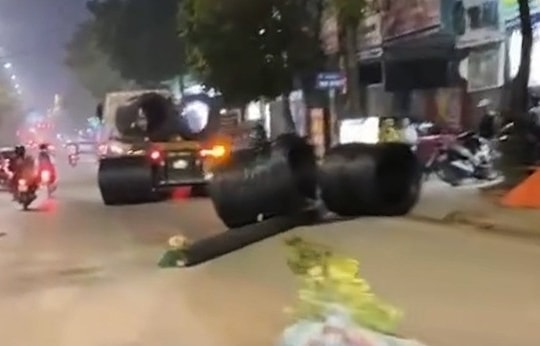By Thanh Nga
Cổ Loa Ancient Citadel is not only a cultural heritage and a testament to the creativity, technical prowess and cultural achievements of ancient Vietnamese people, but also an idyllic destination for tourists.
Beyond its association with Vietnamese legends like the selection of the capital by King An Dương Vương, the creation of a multiple-shot crossbow and a poignant love story, the citadel is a unique and captivating tourist attraction in Đông Anh District, Hà Nội.
According to folklore, An Dương Vương defeated the last of the Hùng Kings in 257 BCE and established the kingdom of Âu Lạc, choosing the site of Cổ Loa as his capital.
The citadel is the largest ancient citadel in Việt Nam, spanning approximately 500ha. Its dominant presence in the northern floodplain of the Red River Delta speaks to the immense labour and resources required to construct it.
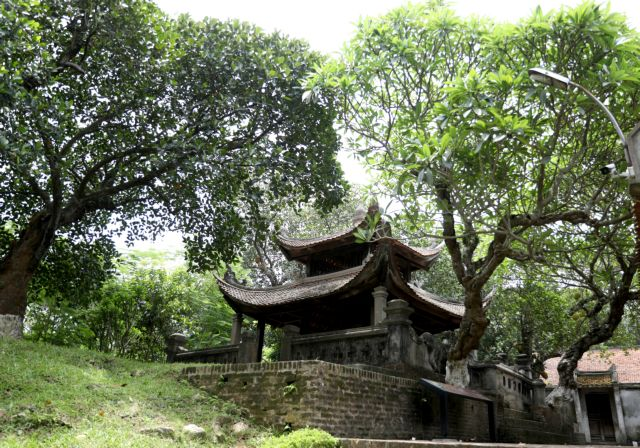 |
| A corner in the Cổ Loa relic site. — VNS Photo Đoàn Tùng |
Legend holds that the citadel once consisted of nine concentric layers, earning it the moniker 'Ancient Spiral', however, only three layers of ancient vestiges remain today - the inner citadel, the middle rampart and the outer rampart - due to the ravages of time and war.
The outer rampart has a perimeter of about 8km, with a surrounding moat and walls ranging from 4 to 12m in height. The more solidly constructed middle rampart has a 6.5-kilometer perimeter and a similar structure. At the heart lies the triangular inner citadel, covering around two square kilometers, which served as the residence of King An Dương Vương and his royal court.
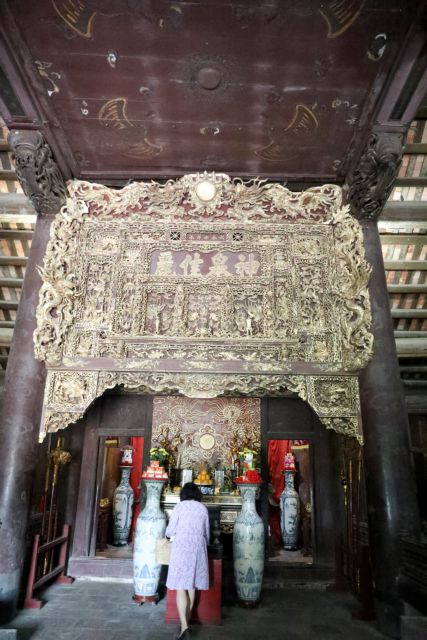 |
| A tourist offers incense at An Dương Vươngg Temple. — VNS Photo Đoàn Tùng |
The citadel has been known by various names, including Loa Thành (Snail Citadel), Côn Lôn Citadel, Tư Long Citadel, Việt Vương Citadel, and Khả Lũ Citadel. In the 10th century, it became the capital for a second time when Ngô Quyền was the king.
The Cổ Loa complex is home to numerous historical, architectural and artistic artifacts, such as the Thượng (Upper) Temple dedicated to King An Dương Vương, a temple honouring General Cao Lỗ, a temple for Princess Mỵ Châu and the Bảo Sơn Pagoda. Visitors can examine excavated bronze statues, arrows, decorated earthenware and stone utensils within these structures.
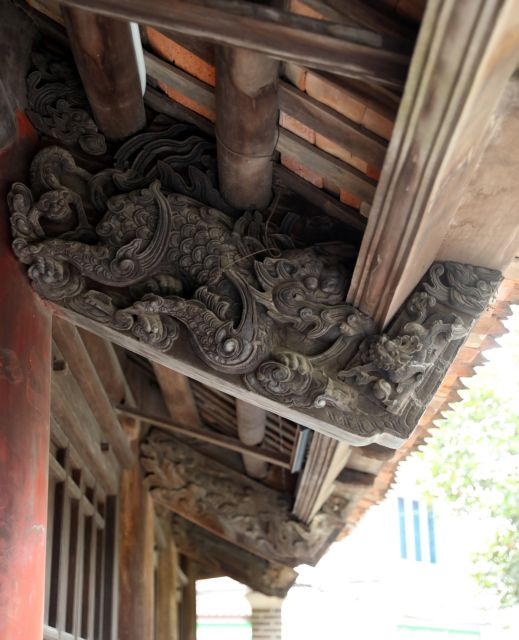 |
| Dragon-carved architecture in the relic site. — VNS Photo Đoàn Tùng |
The most popular attraction is the Upper Temple, built on a hill that was once the king's palace. Facing south, the main buildings in the temple are aligned along the Dũng Đạo (Shinto) axis. Inside, visitors can admire a bronze statue of An Dương Vương and numerous historical relics and antiques made of wood, porcelain and fabric.
In front of the Upper Temple is a large lake, in the middle of the lake is an ancient well. Legend has it that if you use water from this well to wash pearls, the pearls will become even brighter. Therefore, this well was named Ngọc (Pearl) Well.
Pearl Well has a circular arc shape, a natural curved bank embanked with stones and is surrounded by walkways and trees. Previously, the lake opened to the moats of the two outer citadels and the river wharf on the east and south of the outer citadel. According to legend, Princess Mỵ Châu and Trọng Thủy often sailed around this lake before the war broke out.
Another place worth visiting is Am Bà Chúa Relic, also known as Mỵ Châu Tomb. It is a structure located behind a thousand-year-old banyan tree. In this small temple, there is a statue of Mỵ Châu - a natural rock shaped like a headless human being. Legend has it that, after death, Mỵ Châu transformed into a large rock that drifted to Đường Cấm area, east of Cổ Loa Citadel. People brought a hammock out to carry the rock back. When they reached the banyan tree, the hammock broke and the rock fell. Seeing that, the people built a temple there, called Am Bà Chúa.
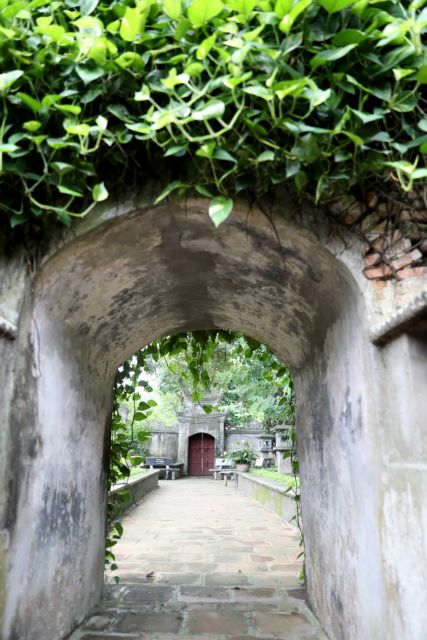 |
| Entrance gate to Mỵ Nương hermitage. — VNS Photo Đoàn Tùng |
Cổ Loa today is a cultural heritage site that demonstrates the creativity, techniques and culture of Vietnam's ancestors in defending the country against foreign invaders. At the same time, the site has become an ideal destination for tourists to explore the cultural values and typical scenery of a peaceful northern Vietnamese village. For the local people, Cổ Loa Citadel still plays an important role in their spiritual life and cultural practices.
 |
| A temple honoring General Cao Lỗ, an important historical figure who commanded the construction of Co Loa Citadel. — VNS Photo Đoàn Tùng |
A Cổ Loa bronze drum dating back over 2,000 years was unearthed in 1982 at the Mả Tre archaeological site in Chợ Hamlet, southwest of the south gate of the Cổ Loa Citadel. The drum was buried face up, inside it contained nearly 200 bronze artifacts including plowshares, axes, spears, arrows and money, dating back over 2,000 years ago.
Cổ Loa Relic Site is one of the ten monuments and beauty spots in Việt Nam designated as Special National Relics by the Prime Minister on September 27, 2012. Every year, Cổ Loa Festival is held to commemorate King An Dương Vương on January 6 in the lunar calendar.
After visiting Cổ Loa Citadel, you can visit some places in Hà Nội such as Hà Nội Opera House and Hà Nội Old Quarter. The Opera House was designed and built by the French in 1901, simulating the architecture of the Garnier Opera House in Paris. While Hà Nội Old Quarter is an intriguing neighbourhood, home to a mix of Vietnamese architecture, green spaces, ancient shops and fresh-as-it-gets street food - all of it easily explored on foot. VNS
How to get there:
From Nội Bài International Airport in Hà Nội to Cổ Loa Citadel is about more than 20km, tourists can take bus No 17 to Cổ Loa Citadel, or take a taxi for about VNĐ250,000 (US$10) for a four-seat car.
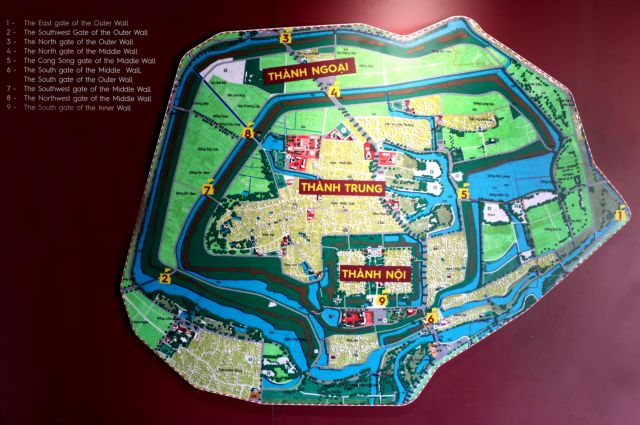 |
| The map of Cổ Loa Citadel. — VNS File Photo |






